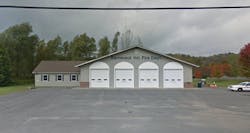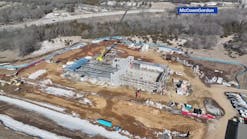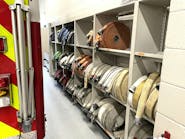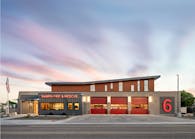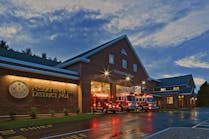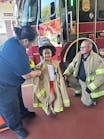For the better part of a decade, architects have been working with clients to incorporate personnel decontamination and Hot Zone design processes into new fire stations. At the same time, the innovations being promoted in the design of new stations have been also working their way into existing stations as departments across the country work to reevaluate their SOP’s and incorporate Hot Zone design principals into existing stations.
As a case in point, a past client came to me with a request to help identify costs to add a gear laundry to his department’s two fire stations; stations that were constructed only 8 years ago and one of which was a Firehouse Station Design Gold Medal winner.
In discussing his needs, it turned out that the gear laundry was just one more step in the implementation of a multi-step departmental project to improve the department’s cancer mitigation efforts. The department had already added IR Saunas at both stations and implemented a field-based gross decontamination process that included scrubbing PPE in the field and bagging them for return to the station and full decontamination. It is this second step that was generating concern as they were coming to realize they did not have a good system for mass decontamination of all gear from a fire call at either station.
The details of some of the discussions regarding centralizing the laundry versus decentralization, reallocation of personnel resources, and the cascading effects or relocating existing equipment are an interesting discussion unto themselves, but that is not the intended focus here. Of more importance to the general discussion of improving cancer mitigation in existing stations are some of the more general conceptual observations that were paramount in the development of the final recommendations.
Observation No. 1
The concepts embodied in the Hot Zone design process are just that: processes. They are processes that are intended to move personnel and equipment from the hazardous Hot Zone, through a decontamination space (or Warm Zone) and finally into the clean Cold Zone. To be most effective, the processes should be contiguous in a way that makes the goal and purpose of the system intuitively obvious to the user.
Observation No. 2
The addition of a new piece of equipment should be viewed in how it fits your department’s decontamination processes. For instance, IR Saunas are an easy piece of equipment to add, and I have seen them in apparatus bays, living quarters, fitness rooms, and even tucked into a training tower. In all of those cases, they were solving the need for perspiration but violating the basic concepts established by the Hot Zone design process. Don’t get me wrong, encouraging a perspiration process is a good thing, and doing so without violating the zoning of your building is even better.
Observation No. 3
Even newer stations can provide a struggle when adapting to changing best practices or new equipment. In some ways, they can be more challenging than aging stations in that there is usually little appetite for spending more money on a relatively new station. It may, however, be possible to achieve all of your goals with a minor capital investment in your facility. With proper planning, that investment can perhaps be included in the initial capital expense along with the equipment.
_____
The project to add a gear laundry to an existing station grew, as these things tend to do, to conclude with a 3-phase project recommendation that would create a centralized gear laundry at one station, but also renovate both stations’ locker areas to include an integrated personnel decontamination process with lockers, showers, saunas and laundry in a Warm Zone that was appropriately separated from the Hot and Cold Zones in each facility.
These changes will, over time, create truly segregated Hot Zone decontamination processes in their existing facilities that not only add required equipment and processes, but will do so in a way that maximizes the benefits.
Editor's note: You can find Part 2 of this series here.
Michael Clark
Michael Clark has been designing public safety facilities for over 35 years and has built a practice that focuses his passion for this field into a creative and innovative problem-solving design firm. Find out more at www.amc-psc.com.

